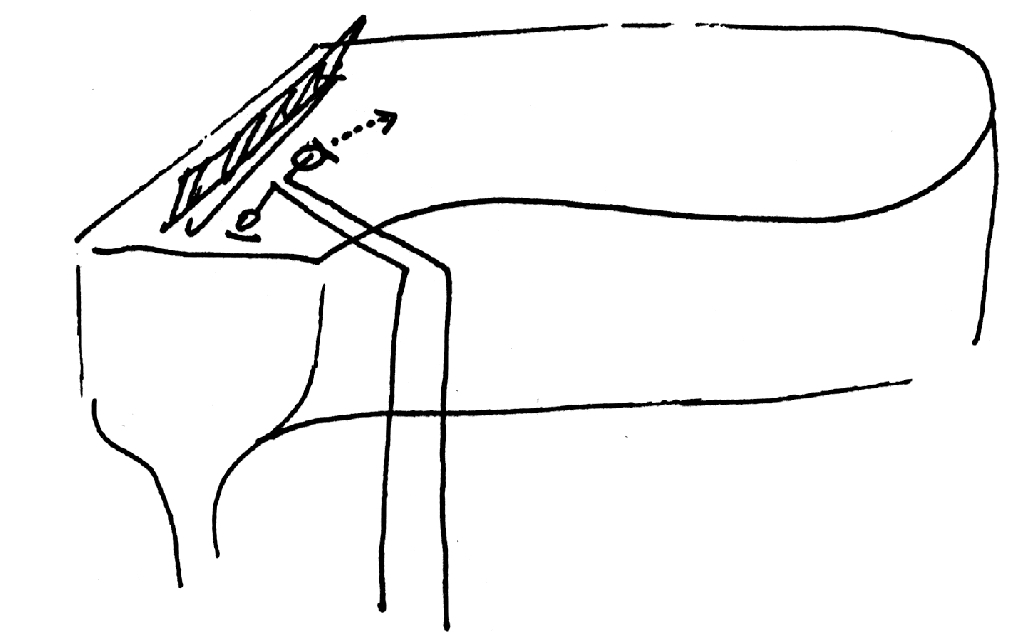
GRUPPEN für 3 Orchester - Ergänzung
Stockhausen Gesamtausgabe auf CD
Die unter Mitwirkung von Karlheinz Stockhausen entstandenen Aufnahmen seiner Werke werden seit 1991 in einer Gesamtausgabe auf Compact Discs veröffentlicht. Kenntlich gemacht ist jede CD-Ausgabe durch Stockhausens Signatur mit einer laufenden Nummer im Kreis. Die Nummern folgen weitgehend der historischen Reihenfolge der Werke. Stockhausen hat bei diesen Aufnahmen als Realisator der Elektronischen Musik, als Dirigent, Spieler, Klangregisseur, musikalischer Leiter mitgewirkt, die Aufnahmen abgemischt und CD-Mastering, Texte, Graphik gemacht.
- Compact Discs können beim Stockhausen-Verlag bestellt werden: Kettenberg 15, 51515 Kürten, Deutschland (www.stockhausenCDs.com).
Karlheinz Stockhausen
GRUPPEN für 3 Orchester
Ergänzung zur Aufführungspraxis
(5. Oktober 1996)
Für alle Tutti-Proben benötigt jeder der drei Dirigenten ein Mikrophon und einen Monitor-Lautsprecher, um mit den beiden anderen Dirigenten zu sprechen. Das Mikrophon eines Dirigenten soll nicht über seinen eigenen Lautsprecher wiedergegeben werden. Diese Ringschaltung muß vor der ersten Tutti-Probe fertig sein.
Klangregisseur für die Tutti-Proben
Es ergab sich seit mehreren Jahren bei Tutti-Proben von GRUPPEN für 3
Orchester, an denen ich während der letzten drei Tage vor der Aufführung in
der Mitte des Saales teilnahm, daß die Dirigenten wünschten und für die Zukunft
vorschlugen, ein Klangregisseur müsse von der Mitte des Saales aus
die Dynamik balancieren und auch andere Korrekturen den Dirigenten mitteilen,
am besten sogar den Probenablauf weitgehend leiten (mit Sprechmikrophon,
Monitorlautsprechern).
Tatsächlich können die drei Dirigenten von ihrem Platz aus nicht beurteilen,
wie die Dynamik im Saal gehört wird, wie die Wirkung "harter" und
"weicher" Schlägel im Ensemble ist. Der Klangregisseur muß das Werk und
die Partitur genau kennen, ein sprachlich direkter und klarer Probenleiter
und von den drei Dirigenten ausgewählt sein. Er soll auch die Mikrophonverstärkung
von Gitarre und Klavier (in Orchester II) mit Hilfe eines kleinen
Mischpultes in der Saalmitte regeln, sich rechtzeitig um den Aufbau kümmern
von 3 Mikrophonen (1 für Gitarre, 2 für Klavier Tiefen und Höhen) und 2 x 2
Lautsprechern (links und rechts ca. 4 m hoch neben Orchester II gehängt
oder auf Stativen).
Ich schlage vor, daß der Klangregisseur zwei Assistenten mitbringt, die
regelmäßig auf allen Plätzen im Saal die Dynamik beurteilen und ihm mitteilen,
wie sie dort klingt.
Einer der drei Dirigenten muß unmittelbar nach der Planung einer Aufführung der GRUPPEN den Aufführungsort besichtigen, eine ausführliche Besprechung mit den Schlagzeugern haben und alle Schlaginstrumente, Celesta, Klaviaturglockenspiel usw. prüfen. Es stellte sich nämlich immer wieder heraus, daß die Schlaginstrumente falsche Tonhöhen hatten. Auch müssen die Orchesterstimmen von den Dirigenten vorher geprüft werden, da immer wieder unkorrigiertes Leihmaterial geliefert wird.
Zusatz zur GRUPPEN-Partitur
Die Lautstärkegrade  müssen so einstudiert werden,
daß man
müssen so einstudiert werden,
daß man  noch in der letzten Stuhlreihe klar hört. Im allgemeinen werden
noch in der letzten Stuhlreihe klar hört. Im allgemeinen werden
 zu leise gespielt;
zu leise gespielt;  muß schon relativ intensiv sein.
muß schon relativ intensiv sein.
 im Schlagzeug müssen an die anderen Instrumente angeglichen
werden, vor allem bei harten Schlägeln. Ein gleichzeitig notiertes
im Schlagzeug müssen an die anderen Instrumente angeglichen
werden, vor allem bei harten Schlägeln. Ein gleichzeitig notiertes
 für Schlagzeug und für andere Instrumente soll gleich laut gehört werden.
Das führt je nach Schlägeln und Zusammenhang zu Änderungen der
Schlagzeug-Dynamik.
für Schlagzeug und für andere Instrumente soll gleich laut gehört werden.
Das führt je nach Schlägeln und Zusammenhang zu Änderungen der
Schlagzeug-Dynamik.
GRUPPEN in Amsterdam 1
[Anmerkungen am Seitenrand:]
Do you have our CD
of GRUPPEN?
Do you have the scores
of INORI? LUZIFERs TANZ?
Yesterday I returned from Sofia where I conducted
the Symphony Orchestra twice with INORI: quite good.
Dear Oliver Knussen,
GRUPPEN rehearsals demand a musician who sits in the centre of the hall, notes all the bars where the balance is not right (where one instrument or group is covered). This person must be able to speak loud enough and short, clear whenever you ask him something.
The 3 conductors cannot know "how it sounds".
The tomtoms are always played too loud in proportion to the other instruments;
their and
and  must be adjusted to the
must be adjusted to the and
and  of the other instruments.
of the other instruments.
All rests must be respected by the tomtom players. They usually do not stop the drum skins at pauses or at the end of a group, but they must.
The same applies to cow bells, cymbals etc. Cow bells are always placed too low. They should be so high, suspended at stands, that the players can see the conductor just below the bells. The reason is that the cow bells should be hit at the rim and most of the time with the original beaters which were inside the bells. Usually the cow bells sound terrible (like tin cans) because of wrong beaters and a wrong playing technique.
Please check all the pitches of the cow bells: percussionists have no ears for octaves!! The same is true for Bongos, Tomtoms, African log drums.
I send you my books vol. 5 + 6 and you can find in #6 a very important text with photographs about GRUPPEN-percussion.
The piano must be amplified (lid off) with 2 microphones, for the highest 1½ octave and for the lower ranges.

The assistant in the centre of the hall must balance the piano and the electric guitar (both in orchestra II) with 3 potentiometers and project them, perfectly balanced, stereophonically through 4 speakers (2 x 2 at the right and left of the podium II, about 4–5 meters high on 4 stands:
Please go to the mixing console yourself and check if the balance is right. In particular the guitar is difficult to integrate. It usually sounds completely alien to the rest (generally too loud, too poppy).
Check by all means the Kontrabaß-Posaune in orchestra III: the player very often plays an octave too high. And there is always a wrong mute...
Lamps: the lamps as shown in the score are really necessary: standing lamps within each orchestra in addition to the spot lights from afar. Please ask for them from the start of the rehearsals.
The 5 octave Celesta (Schiedmayr!) is very often a problem. In case of difficulties a good sampler (with Celesta sounds) could be the solution. The same applies to the "Klaviatur-Glockenspiel".
DO NOT PLAY OTHER ORCHESTRA MUSIC IN THE SAME PROGRAM: GRUPPEN – intermission – PIANO PIECE XI (or excerpts from GRUPPEN with explanation of space music) – GRUPPEN repeated.
The latest edition of the U.E.-score contains all the corrections. Ask U.E. Vienna! The new edition is also larger and considerably better readable.
The main task of GRUPPEN is the dynamic balance of the 3 groups, and of percussion with other instruments within each group: tame the drummers, make the sound of cow bells sound like beautiful bells (careful choice of beaters).
The rehearsal plan of the score is not sufficient: at least one more day of split rehearsals is necessary.
